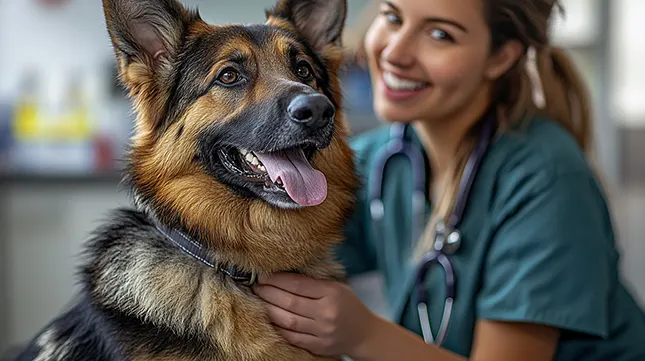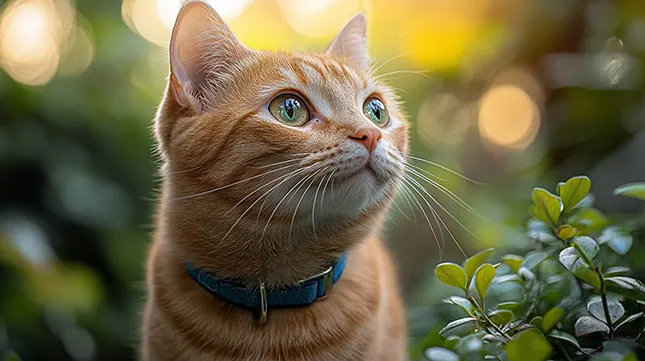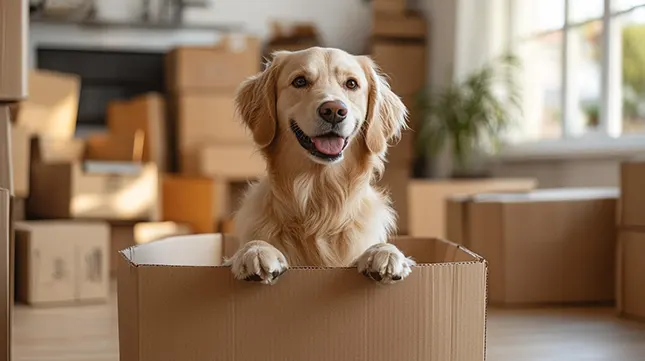Taking Your Pets Abroad The Essential Guide To Moving With Pets

Taking your beloved animals overseas adds an extra layer of complexity to any house move.
Moving with pets often involves careful planning, strict documentation, and a keen awareness of their needs and well-being.
Changes in environment, unfamiliar smells, and long journeys can all prove deeply unsettling if approached without preparation.
Fortunately, with a little added reassurance and the right guidance, you can ensure your pets arrive safely and are ready to embrace their new surroundings.
White & Company has put together some valuable insights, aiming to simplify a process that can otherwise feel overwhelming.
From health checks and travel arrangements to meeting legal requirements, our goal is to help you and your pets settle abroad with minimal stress.
Understanding the Challenges of Moving with Pets

Relocating overseas with a pet should not be underestimated.
Relocating your family is already a complicated experience, but adding pets into the equation introduces unique challenges.
They may struggle with the sudden upheaval of familiar routines, and the journey itself—whether by car, train, or plane—can be particularly unsettling.
Acknowledging these challenges early and putting a plan in place will greatly improve the chances of a smooth transition.
Checking Your Pet’s Fitness to Travel

Make sure your pet is well enough to make the journey to your new home.
The first step in ensuring your pet’s fitness and health before you decide how it will travel is to ensure that it is healthy.
A full veterinary check-up will confirm that they can cope with the journey and that their vaccinations, treatments, and microchips are all up to date.
During this visit, request copies of their health records.
You may need these later for new vets abroad or as part of entry requirements.
Consider registering with a vet in your destination country before you leave.
This proactive step ensures that health records are transferred seamlessly, allowing your pet to receive any necessary care from day one in your new home.
Preparing Your Pet for the Move

There are several things you should do to ensure your beloved pet is ready to move.
As moving day approaches, you’ll have plenty on your mind.
Give yourself time to plan for your pet’s journey too.
A collar with engraved details or an up-to-date microchip provides peace of mind for cats or dogs.
Familiar objects, such as their favourite toy or bedding, can help keep them calm during the final days at your old home.
If you have fish or other small aquatic creatures, ensure their tank is cleaned and that appropriate bags or containers are ready for transport.
Once you arrive, set up their habitat as soon as possible, creating a sense of normality that helps them acclimatise.
Considering Kennels or a Pet Sitter
For some pets, travelling alongside you isn’t the best option.
If you are moving internationally, especially over long distances or involving complex routes, it might be preferable to temporarily house your pet in kennels or ask a trusted friend or family member to care for it until you’re settled.
Once you’ve established a stable environment in your new home, you can arrange for them to move in with you.
This staged approach can significantly reduce stress for more sensitive animals.
Moving with Pets Internationally

Like any move overseas, there are some additional things to keep in mind regarding your pet.
Taking pets abroad involves extra steps.
Different countries enforce their own regulations regarding vaccinations, import permits, and microchipping.
Some nations may require blood tests, health certificates signed by accredited vets, or even quarantine periods.
You’ll need to ask yourself several questions before the journey:
- What legal paperwork must be completed?
- Are all inoculations current, or will additional ones be required?
- How exactly will your pet travel and what special arrangements might they need?
Answering these questions early helps avoid last-minute complications.
Researching in advance will prevent unnecessary delays and ensure that your pet meets every entry requirement for your new country.
Legal Requirements and Quarantine Rules
Every destination has its own set of standards for incoming animals.
Australia, for example, is known for its stringent quarantine laws.
This means that your pet might need to spend time in a designated facility before it can join you at home.
If you travel overland and pass through other countries en route, remember that each country’s regulations may apply, even if you are just passing through.
Confirming these details prevents unexpected setbacks at border crossings.
The Pet Travel Scheme (PETS) enables pets returning to the UK to re-enter without quarantine if they meet specific criteria.
A valid Pet Passport and proof of a rabies blood test from an approved country typically ensure a smooth return to British shores.
Choosing the Right Pet Transport Service

Choosing the people to assist will reduce the stress of the move.
Moving with pets can be simplified by enlisting professional help.
Specialist pet relocation companies manage much of the administrative burden and have experience dealing with complex legal frameworks.
They can help you navigate the paperwork, arrange suitable travel carriers, and ensure that your pet’s journey is safe and comfortable.
Settling Your Pet into the New Home

Follow these tips to help your pet feel at home in no time.
Once your pet has arrived, give them time to explore and become familiar with the new surroundings.
Keep routines as consistent as possible—serving meals and treats at the same time of day and providing easy access to their bedding, water, and toys.
Introducing them gradually to each room and spending time reassuring them will help ease anxieties and foster a sense of security in your new home.
Common Mistakes to Avoid When Moving with Pets
Many pitfalls can be avoided with proper foresight. Don’t leave veterinary appointments, vaccinations, or paperwork until the last minute.
Neglecting to research your destination country’s regulations can cause costly and upsetting delays.
Being well-informed and prepared will help you sidestep these common errors, resulting in a better overall experience for both you and your pets.
How White & Company Can Help

At White & Company, we understand the complexities of international moves and can provide guidance and support throughout the process.
While we don’t specialise in pet relocation ourselves, we’re well-versed in the overall moving process and can connect you with trusted partners who handle the specifics of moving with pets.
Our friendly team is happy to answer questions, offer advice, and help ensure your entire family—including the furry, feathered, or finned members—settles in smoothly abroad.
Ready to Begin Your Pet-Friendly Relocation?
Moving with pets demands careful planning, attention to detail, and compassion.
By starting the process early, consulting experts where necessary, and preparing your animals for the journey ahead, you set the stage for a successful relocation.
For more information on international moves, shipping requirements, or to discuss your upcoming relocation, don’t hesitate to get in touch with White & Company.
Let us help you navigate the intricacies of moving home so you can focus on enjoying the new opportunities that await you and your pets in your new country.

Max is a seasoned writer and blogger in the real estate and home moving sectors, as well as a knowledgeable source of information for expatriates living and working abroad. His detailed insights have helped thousands of people move and live abroad with greater simplicity and ease.
Posted in: News
Leave a Comment (0) ↓


